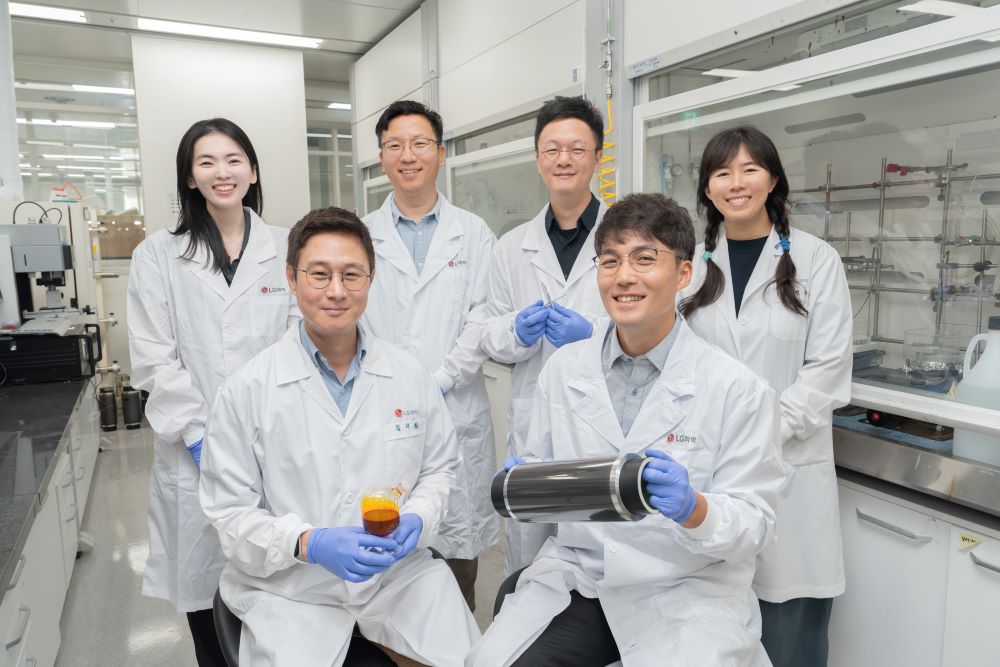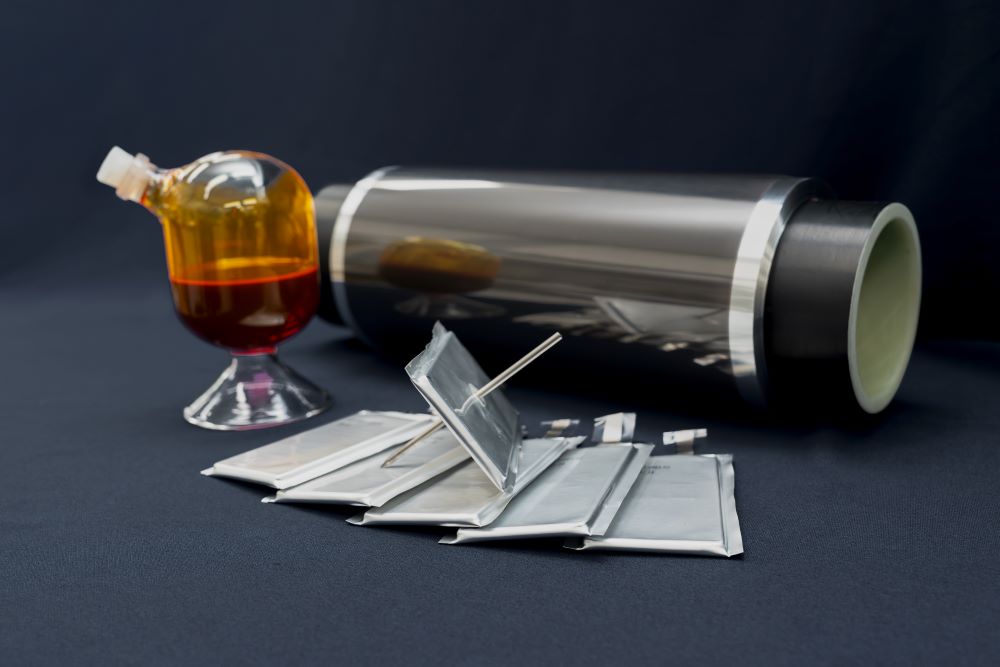Thermal runaway has plagued the lithium-ion battery industry since its inception. While measures to mitigate safety risks have been advanced along the way, reaching a very high point today, “thermal events” – which generate gas and can potentially escalate to full combustion – have not been rooted out for good.
Now, South Korea’s LG Chem claims to have found a solution to this long-standing issue. The conglomerate announced on Tuesday that its Platform Technology R&D team has developed a temperature-responsive Safety Reinforced Layer (SRL), a material which it describes as capable of suppressing thermal runaway.
It revealed that SRL is a composite material that changes its electrical resistance based on temperature, acting as a “fuse” that blocks the flow of electricity in the early stages of overheating.
The material comes in the form of a thin layer, just 1 micrometer (1μm) thick – about one hundredth the thickness of human hair – positioned between the cathode layer and the current collector (an aluminum foil that acts as the electron pathway). When the battery’s temperature rises beyond the normal range, between 90°C and 130°C, the material reacts to the heat, altering its molecular structure and effectively suppressing the flow of current, LG Chem said.
The material is decribed as highly responsive to temperature, with its electrical resistance increasing by 5,000 ohms (Ω) for every 1°C rise in temperature. The material’s maximum resistance is over 1,000 times higher than at normal temperatures, and it also features reversibility, meaning the resistance decreases and returns to its original state, allowing the current to flow normally again once the temperature drops.
Testing results
LG Chem’s Platform Technology R&D team worked in collaboration with Professor Lee Minah’s team from the Department of Battery Engineering at POSTECH to analyze the material. Safety verification was conducted in partnership with LG Energy Solution, the conglomerate’s battery storage arm. The research findings were published online in the September edition of Nature Communications.

In its announcement, LG Chem has reported that in both battery impact and penetration tests, the batteries equipped with the thermal runaway suppression material either did not catch fire at all or extinguished the flames shortly after they appeared, preventing a full-blown thermal runaway event.
In a nail penetration test involving mobile lithium cobalt oxide (LCO) batteries, only 16% of regular batteries did not catch fire. However, none of the batteries with the thermal runaway suppression material experienced any fire incidents.
In an impact test on nickel cobalt manganese (NCM) batteries for electric vehicles, where a 10 kilogram weight was dropped onto the batteries, all of the standard batteries caught fire. In contrast, 70% of the batteries equipped with the thermal runaway suppression material did not ignite at all, while the remaining 30% saw flames, but they were extinguished within seconds.
“Impact testing on 3.4-Ah pouch cells shows that the SRL reduces battery explosions from 63% to 10%,” the researchers write in their paper.
According to LG Chem, previous methods that involved placing temperature-responsive materials inside the battery cell often faced issues with slow reaction times or reduced energy density. By contrast, the newly developed material overcomes such shortcomings and allows for rapid application in mass production processes.
“This is a tangible research achievement that can be applied to mass production in a short period of time. We will enhance safety technology to ensure customers can use electric vehicles with confidence and contribute to strengthening our competitiveness in the battery market,” said Lee Jong-Ku, CTO of LG Chem.
In their research paper, the authors write that they have demonstrated the roll-to-roll production of SLR on current collectors at a rate of 5 km per day.
LG Chem has completed safety verification tests for the thermal runaway suppression material in mobile batteries and plans to continue safety testing for large-capacity electric vehicle batteries through next year.
This content is protected by copyright and may not be reused. If you want to cooperate with us and would like to reuse some of our content, please contact: editors@pv-magazine.com.









By submitting this form you agree to pv magazine using your data for the purposes of publishing your comment.
Your personal data will only be disclosed or otherwise transmitted to third parties for the purposes of spam filtering or if this is necessary for technical maintenance of the website. Any other transfer to third parties will not take place unless this is justified on the basis of applicable data protection regulations or if pv magazine is legally obliged to do so.
You may revoke this consent at any time with effect for the future, in which case your personal data will be deleted immediately. Otherwise, your data will be deleted if pv magazine has processed your request or the purpose of data storage is fulfilled.
Further information on data privacy can be found in our Data Protection Policy.